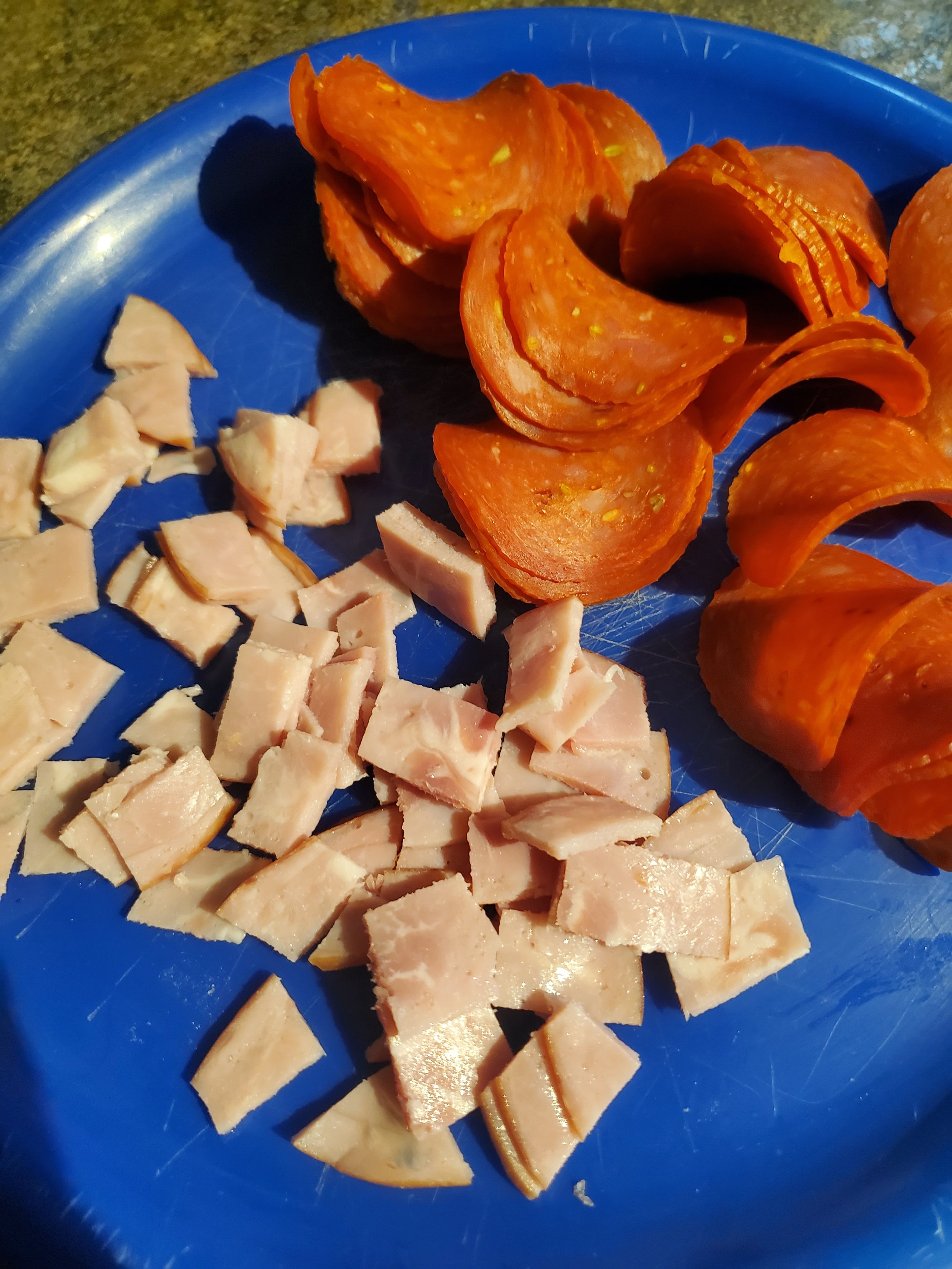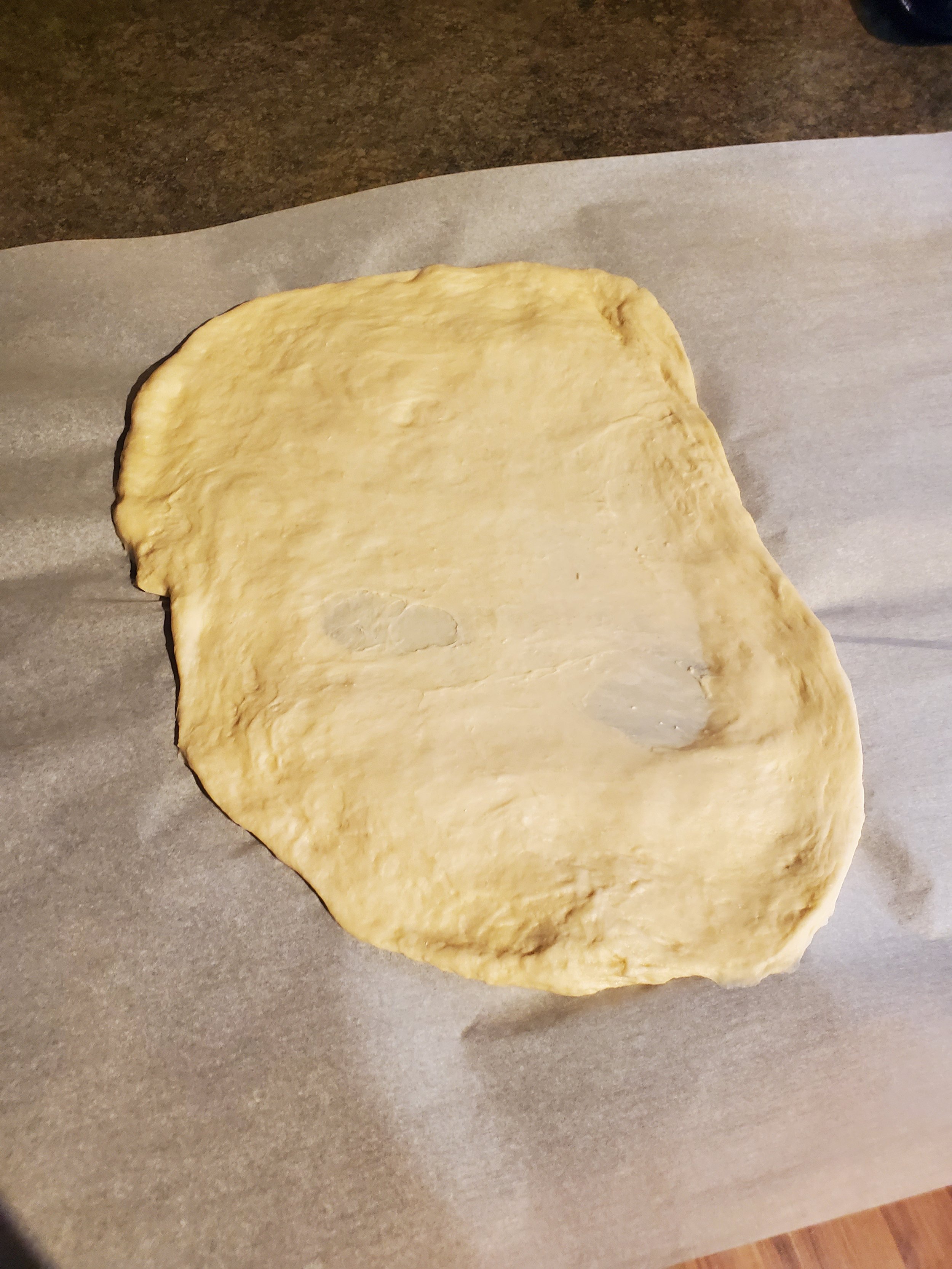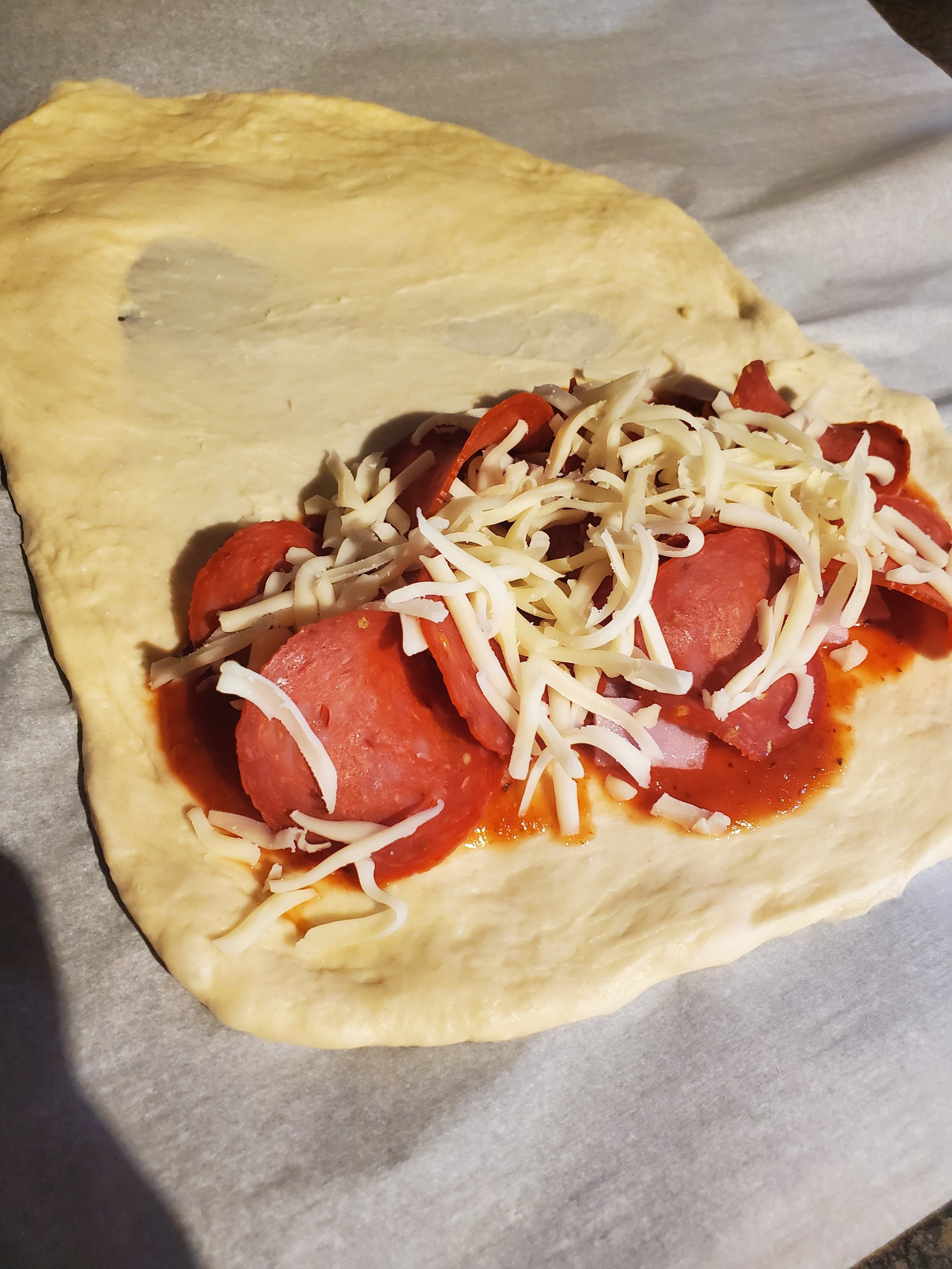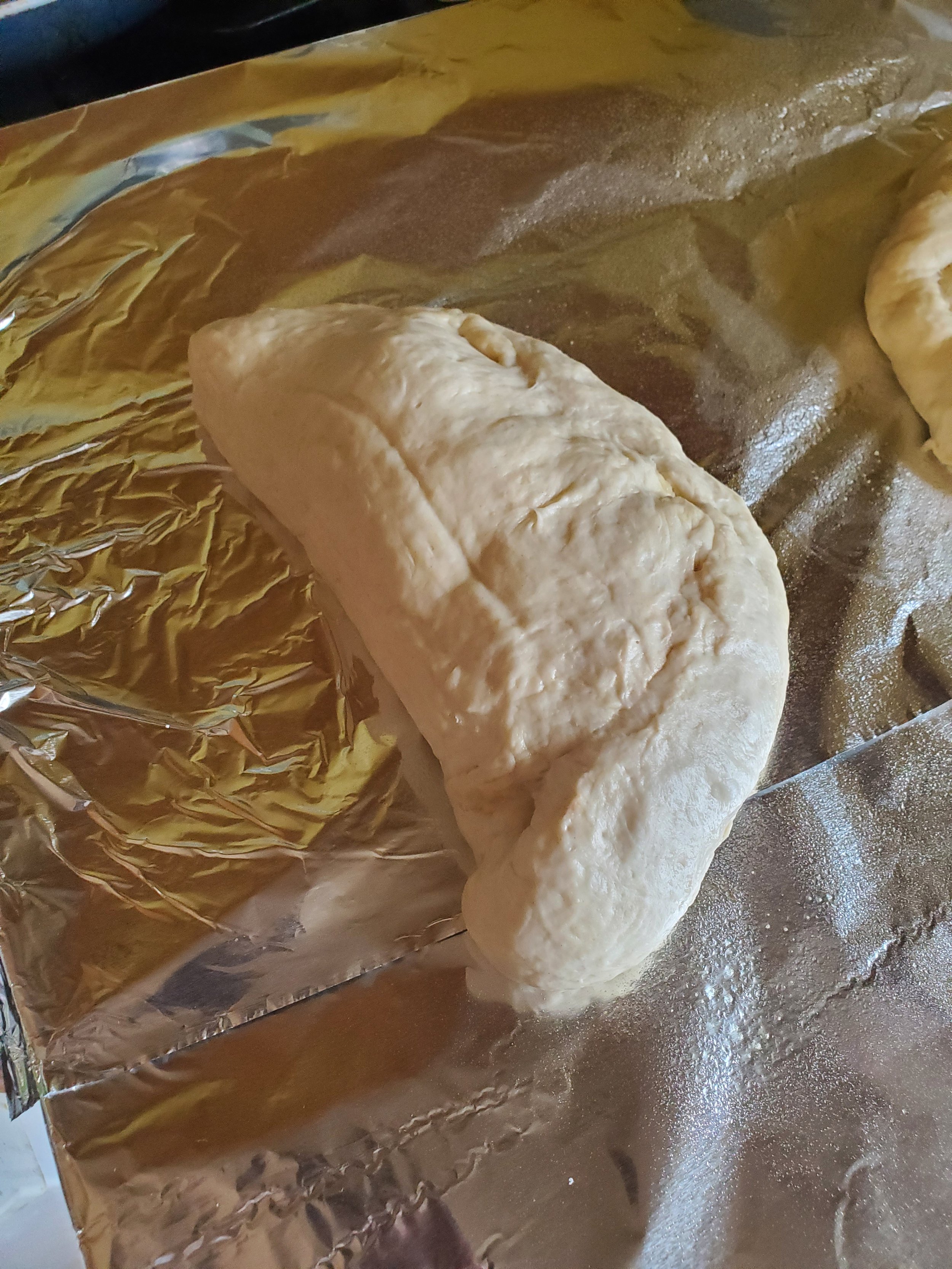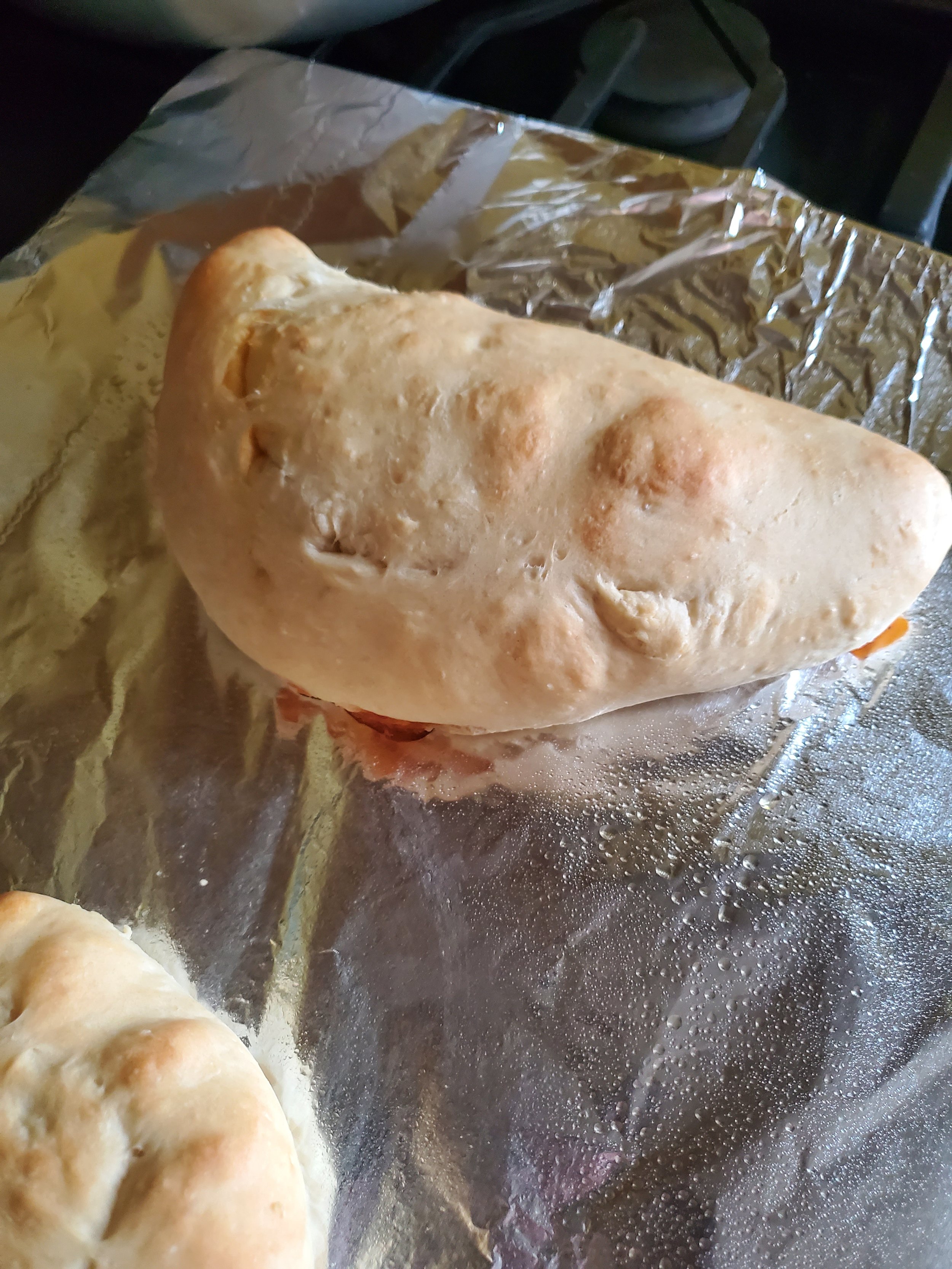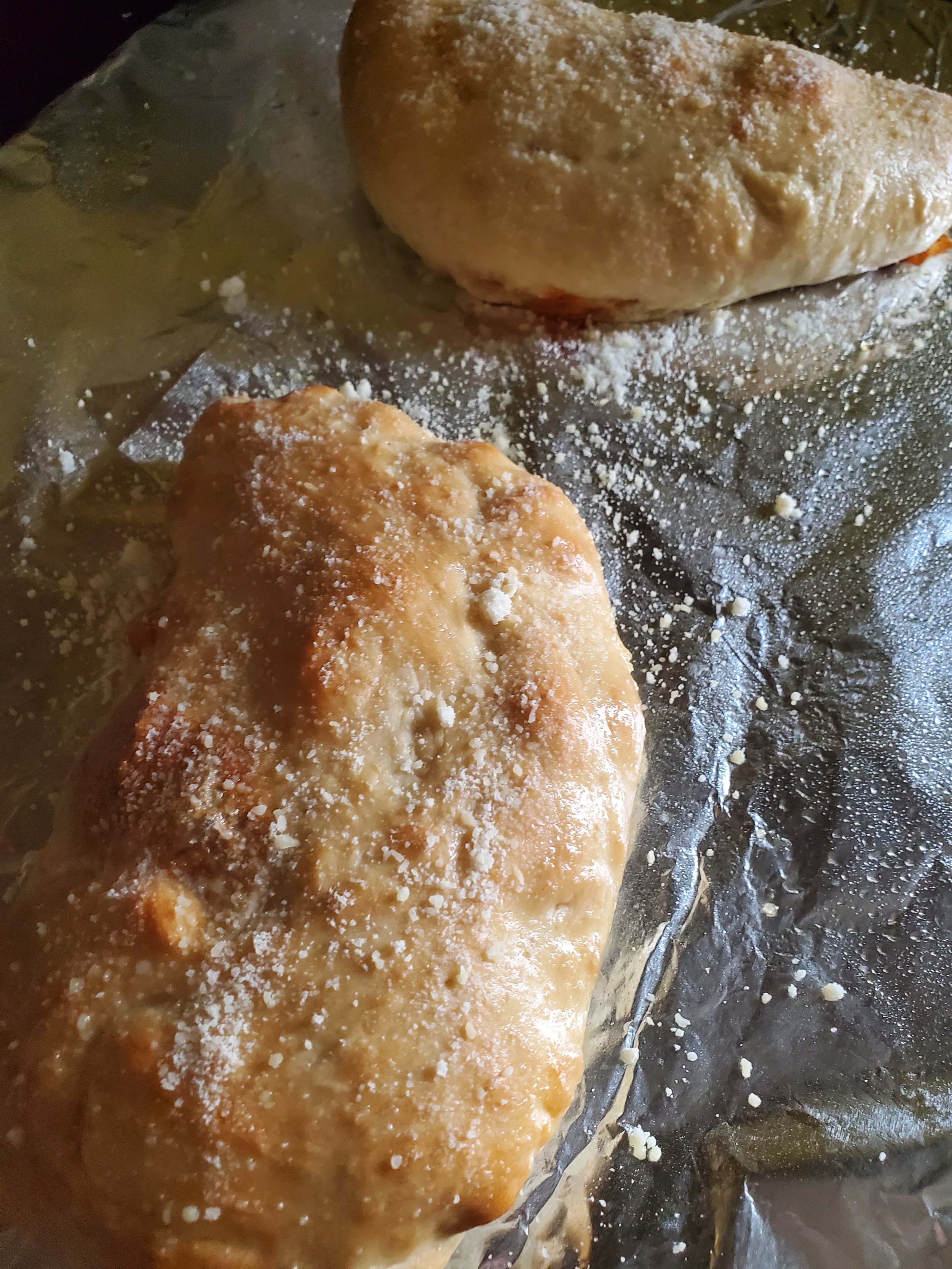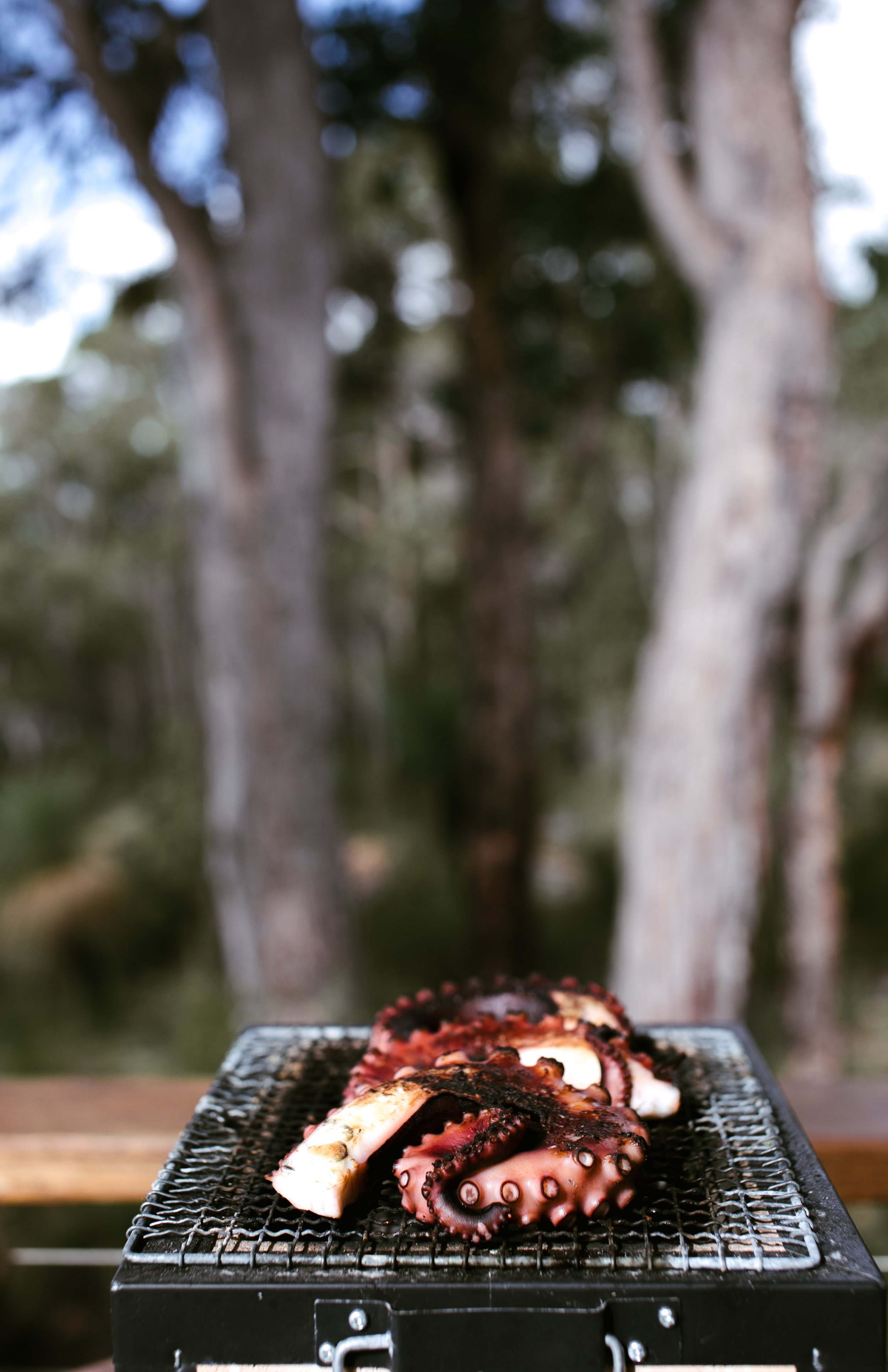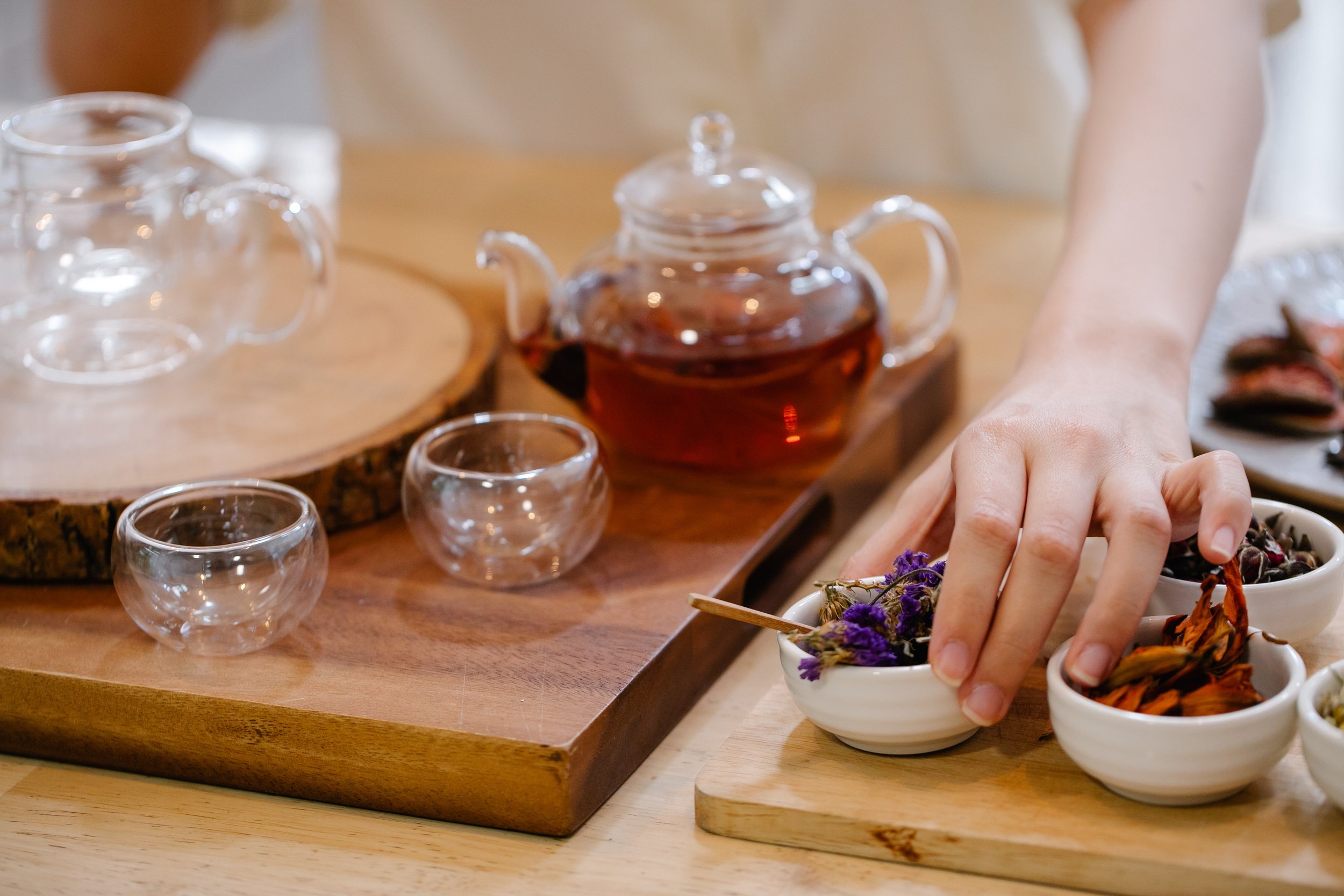The most delicious recipe you’ll make all weekend.
Sometimes you really want a pizza, but you don’t have a good place nearby, and you don’t need to make a giant pie. The answer is stromboli. Stromboli is a wonderful food for when you’re going out, as it’s very much like a hand pie, even if ‘out’ is just heading out to enjoy your yard. As with most recipes we share, these are influenced by your Blogger’s history, as a stromboli is a very Philadelphia thing.
Ingredients:
1 packet pizza dough mix or 1 pound premade dough
(if packet: 1/2 cup water, hot, and 1 teaspoon oil, or as directed)
1/2 pack pepperoni
4 slices Canadian bacon
1/3 cup pasta sauce
1 cup shredded mozzarella
1 tablespoon butter
grated parmesan
Tools:
mixing bowl
spoon
parchment paper and/or aluminum foil
knife
baking sheet
spray oil
small heat-safe dish
basting brush
This recipe can be very messy. If you end up wearing some of it, no worries. It just means you've done it right.
To get started, either work your premade dough until it's soft and pliable, or mix together your dry ingredients, water and oil in a mixing bowl.
If you're making the dough, we recommend stirring it with a spoon until you get a shaggy, lumpy approximation of a dough ball - then knead by hand until you reach the desired consistency. If it's very sticky, add a little flour a spoonful at a time and work it in. If it's dry, add some water the same way.
We would like to take this opportunity to remind you that a little tackiness to the dough is actually helpful, and stops your stretched dough from rebounding immediately.
Working on a sheet of parchment paper is optional, but we find it to be extremely helpful, especially when transferring your finished product to the baking sheet. Feel free to make your own decision here. Some people prefer a clean countertop, some use a board or silicon mat, some (us included) like a piece of wax or parchment paper.
Turn your dough out onto your preferred work surface and make sure you've broken up any lumps to create a smooth ball of dough.
Your next step will be to shape this dough. You can make it a circle like you're working on a pizza, but we find a slightly more oblong or ovoid shape to be easier to work with when it comes time to fold it over. You can work the dough into a circle or oval right away if you like, but we often cover it with a clean kitchen towel and allow it to rest for ten minutes or so before we proceed.
If you're letting the dough rest a little, this is an excellent time to preheat your oven to 375. And if you prefer smaller pieces but have purchased the large slices of canadian bacon (the situation we found ourselves in), it's also a good time to grab a knife and chop those big slices up.
After you've stretched the dough out and it's staying where you've put it (which is why we mentioned a little stickiness being useful), kind of eyeball the halfway point of your shape. Spread a thin layer of pasta sauce on one half, and then add cheese and pepperoni and canadian bacon on top of the sauce. Be sure to leave yourself a little margin around the outer edge of the dough. You'll want plenty of filling there, but you also need to seal the two halves together into a half-moon shape before baking. Pasta sauce makes the dough too slick to seal, so if you drip some too close to the edge, be sure to wipe it up. Nobody wants all that melty cheese to ooze out the sides and go to waste.
Make sure you work all the way around the open edge, pinching the dough together and folding that pinched portion underneath the bulk of the stromboli. Folding it under ensures the weight of the dough and filling will hold the seal together instead of just hoping for the best.
Now you've got a lumpy looking half-circle of dough. It doesn't look very appetizing at the moment, we know. But don't fret, your final product will be beautiful.
Place a sheet of parchment paper or aluminum foil on the baking sheet. If you're using foil, give it a quick spritz with some spray cooking oil to be sure you don't leave the whole bottom of the stromboli on the baking sheet later.
It's time to transfer your dough to the baking sheet - if you've worked on some kind of mat, board or sheet, pick the whole thing up to avoid opening up your seal. Turn it over onto your outstretched hand, and then flip it onto the baking sheet.
If you've worked directly on the counter, make sure you lift gently all the way around the edges before you try to pick it up, and support as much of the center as you can. The dough will stretch quite a way before it breaks, but there's no saving a stromboli with a hole in it without making a whole new ball of dough.
After you have the stromboli on the baking sheet, put it into the oven for 15-20 minutes.
Put that little bit of butter into the heat-safe dish and stick the dish somewhere close to the oven vent. This will allow the butter to melt without using any more energy than you already have to (and also prevents popping everywhere, like heating it in a pan or the microwave can sometimes cause).
Check in at the 15 minute mark to be sure your oven isn't overzealous today. Once the top of the stromboli changes color to lightly golden, turn the oven off. Pull the baking sheet out of the oven and use a basting brush to coat the top of the stromboli with melted butter, then dust with parmesan cheese (you can also add herbs here, if your family doesn't panic at the sight of green things).
Put the whole thing back into the oven for five more minutes, even though the oven is off. We just want the residual heat in the oven to melt the cheese into the butter so it sticks to the stromboli.
After the five minutes are up, remove your meal from the oven and let it cool a few minutes before serving.
Let us know what you think about this delicious meal over on our Facebook. We’d love to hear from you!

